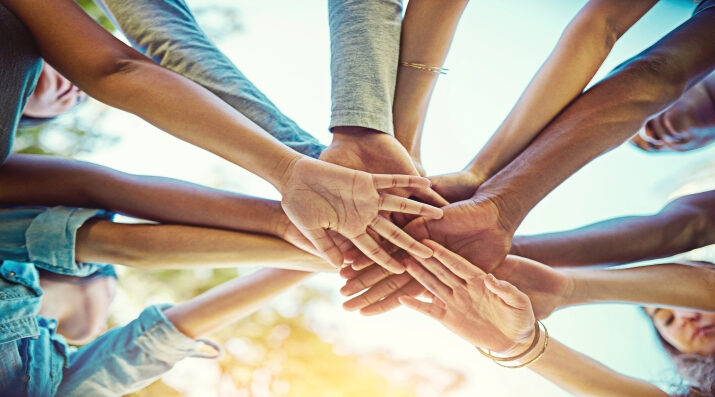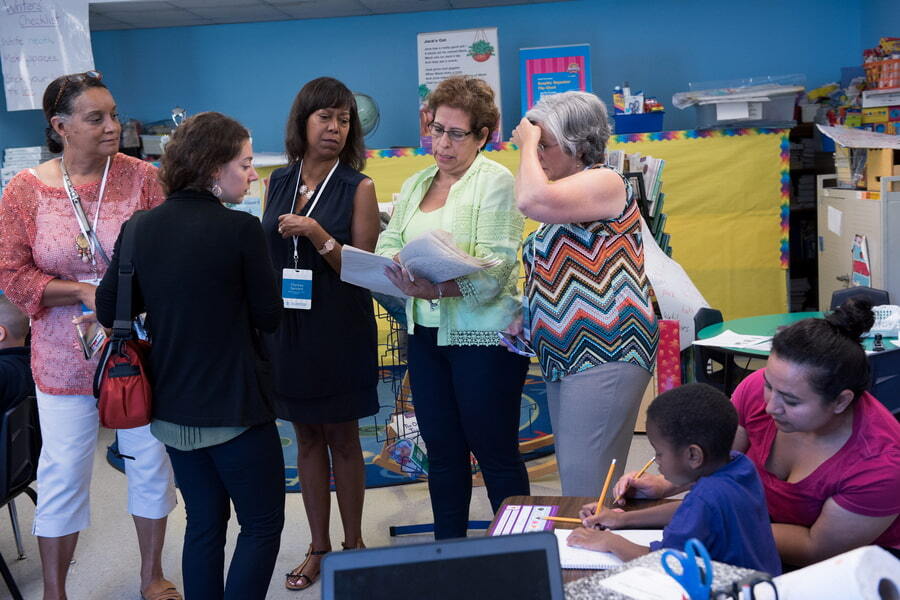Building Community
25 Behaviors That Support Strong Network Culture
Topics

When educators design and create new schools, and live next gen learning themselves, they take the lead in growing next gen learning across the nation. Other educators don’t simply follow and adopt; next gen learning depends on personal and community agency—the will to own the change, fueled by the desire to learn from and with others. Networks and policy play important roles in enabling grassroots approaches to change.
How do educators connect with each other? These 25 day-to-day actions shape the culture of learning networks and the value they create.
"Only connect! That was the whole of her sermon. Only connect the prose and the passion, and both will be exalted, and human love will be seen at its height. Live in fragments no longer."
–E.M. Forster, from Howard's End
"... Keep reaching out, keep bringing in.
This is how we are going to live for a long time: not always,
for every gardener knows that after the digging, after the planting,
after the long season of tending and growth, the harvest comes."
–Marge Piercy, from "The Seven of Pentacles"
In this series on network design and network thinking, I explored the power and promise of networks as residing in how connection and flow contribute to life, liveliness, and learning. See, especially, Connection is Fundamental.
In Why Linking Matters, I looked at how certain networks can more optimally create what are known as "network effects," including small world reach, rapid dissemination, resilience, and adaptation.
I also noted, in Structure Matters in particular, that living systems—including classrooms, schools, school districts, and communities—are rooted in patterns of connection and flow. That's why shifts in connections—between people, groups, and institutions—as well as flows of various kinds of resources can equate with systemic change, and ideally they can lead to greater health (in other words, equity, prosperity, sustainability).
Networks can also deliver myriad benefits to individual participants, including: inspiration; mutual support; learning and skill development; greater access to information, funding, and other resources; greater systemic or contextual awareness; breaking out of isolation and being a part of something larger; amplification of one's voice and efforts; and new partnerships and joint projects.
It's also true, however, that not every network or network activity creates all of these effects and outcomes.
The last two posts looked at two factors that contribute to whether networks are able to deliver robust value to individual participants and the whole, including network structure and what form leadership takes. Networks are by no means a panacea to social and environmental issues and can easily replicate and exacerbate social inequities and environmentally extractive practice. So values certainly have a place, as does paying close attention to dynamics of power and privilege.

It is also the case that individual and collective behavior on a day-to-day basis have a lot to say about what networks are able to create. The following is a list of 25 behaviors for you to consider as part of your network practice as an educator:
- Weave connections and close triangles to create more intricacy in the network. Closing triangles means introducing people to one another, as opposed to networking for one's own self, essentially a mesh or distributed structure rather than a hub-and-spoke structure.
- Create connections across boundaries/dimensions of difference. Invite and promote diversity in the network, which can contribute to resilience and innovation.
- Promote and pay attention to equity throughout the network. Equity here includes ensuring everyone has access to the resources and opportunities that can improve the quality of life and learning. Equity impact assessments are one helpful tool on this front.
- Name and work with power dynamics and unearned privilege in the direction of equity.
- Be aware of how implicit bias impacts your thinking and actions in the network. Become familiar with and practice de-biasing strategies.
- Think, learn, and work out loud, in the company of others or through virtual means. This contributes to the abundance of resources and learning in the network.
- Don't hoard or be a bottleneck. Keep information and other resources flowing in the network.
- Identify and articulate your own needs and share them with others. Making requests can bring a network to life as people generally like to be helpful!
- Stay curious and ask questions; inquire of others to draw out common values, explicit and tacit knowledge, and other assets.
- Make ongoing generous offers to others, including services, information, connections.
- Be a matchmaker who helps to connect needs and offers throughout the network.
- Practice good listening. In particular, listen for values, needs, assets, potential, patterns, and themes.
- Identify and circulate underutilized assets and excess capacity in the network.
- Promote others' and their work.
- Express authentic appreciation of others.
- Share credit with others.
- Embrace shared responsibility for success.
- Create and use platforms (in-person convenings and virtual sites) that allow people to find one another, create new connections, match interests/offers with needs, and share information freely.
- Curate information and data to make it more accessible, attractive, and digestible.
- Support, encourage, and practice self-organization.
- Celebrate small and large successes and key developments along the way.
- Cultivate a growth mindset. Revel in a learning stance.
- Be willing to be vulnerable. Say you don't know, that you are struggling, that you need help!
- Get comfortable with chaos. Most networks thrive at the edge of what can feel like disorder, at least compared to more formal and hierarchical organizations.
- Embrace love as a network value. Here love is defined as "seeing others as legitimate others" (Humberto Maturana) and "allowing for the complexity of others and ourselves" (Nora Bateson).
Reflect on which of these behaviors you and others in your network, organization, community, and/or networked activities already demonstrate and which you do not.
Which behaviors might you start practicing more intentionally and what might be the benefit of doing so?
What additional behaviors would you add to the list?
Next Generation Learning Challenges invites you to respond to these questions and ideas about networks in education and learning. Please join the conversation in the NGLC Networks for Learning group on LinkedIn. The group asks how we design our networks, how we act within and across them, what we know works well, and how they can best drive future learning shifts in K-12 education. Visit our Networks for Learning site for more information about this topic.
Photos, from top:
- PeopleImages / iStock.com
- A group of educators review learning materials during a school visit on a professional learning trip to Chicago that was coordinated by Next Generation Learning Challenges, September 2015. (NGLC)




